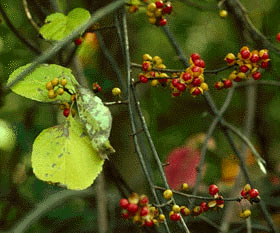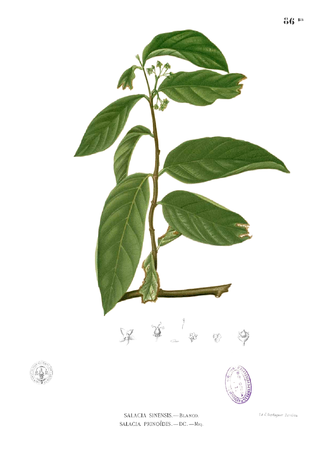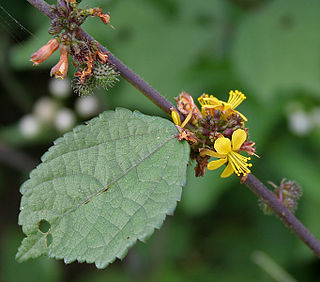
Frank Anthony Wilczek is an American theoretical physicist, mathematician and Nobel laureate. He is currently the Herman Feshbach Professor of Physics at the Massachusetts Institute of Technology (MIT), Founding Director of T. D. Lee Institute and Chief Scientist at the Wilczek Quantum Center, Shanghai Jiao Tong University (SJTU), distinguished professor at Arizona State University (ASU) and full professor at Stockholm University.

Vigna is a genus of plants in the legume family, Fabaceae, with a pantropical distribution. It includes some well-known cultivated species, including many types of beans. Some are former members of the genus Phaseolus. According to Hortus Third, Vigna differs from Phaseolus in biochemistry and pollen structure, and in details of the style and stipules.

The Celastraceae are a family of 98 genera and 1,350 species of herbs, vines, shrubs and small trees, belonging to the order Celastrales. The great majority of the genera are tropical, with only Celastrus, Euonymus and Maytenus widespread in temperate climates, and Parnassia (bog-stars) found in alpine and arctic climates.

Beilschmiedia is a genus of trees and shrubs in family Lauraceae. Most of its species grow in tropical climates, but a few of them are native to temperate regions, and they are widespread in tropical Asia, Africa, Madagascar, Australia, New Zealand, North America, Central America, the Caribbean, and South America. The best-known species to gardeners in temperate areas are B. berteroana and B. miersii because of their frost tolerance. Seeds of B. bancroftii were used as a source of food by Australian Aborigines. Timbers of some species are very valuable.

Salacia is a genus of plants in the family Celastraceae. They are woody climbers naturally found in tropical regions.
Adenodolichos is a genus of shrubs in the legume family Fabaceae, native to tropical Africa.
Psophocarpus is a genus of flowering plants in the legume family, Fabaceae. It includes nine species of climbing herbs or subshrubs native to tropical Africa. Typical habitats include seasonally-dry tropical forest and forest margins, moist wooded grassland and grassland, thicket, swamp, and secondary vegetation. It belongs to subfamily Faboideae.
Ighermia was a monotypic genus of flowering plants in the daisy family. It had only one species, Ighermia pinifolia(Maire & Wilczek) It was first published in Nordic J. Bot. Vol.3 on page 445 in 1983.

Triumfetta is a genus of plants in the family Malvaceae. Burbark is a common name for plants in this genus.
Flabellariopsis is a genus in the Malpighiaceae, a family of about 75 genera of flowering plants in the order Malpighiales. Flabellariopsis includes one species, Flabellariopsis acuminata, which occurs in equatorial Africa in riverine forests or in wet forests, dry evergreen forests, or wooded grasslands.
Ancistrocarpus is a genus of flowering plants belonging to the family Malvaceae.
Wilczekra is a genus of flowering plants belonging to the family Celastraceae.
Traganopsis is a genus of flowering plants belonging to the family Amaranthaceae.

Loeseneriella is a genus of flowering plants belonging to the family Celastraceae.
Apodostigma pallens is a species of flowering plant belonging to the family Celastraceae. It is a liana native to tropical Africa and Madgascar. It grows from 5 to 15 meters tall, with green to yellow-cream flowers. It is the sole species in genus Apodostigma.
Craterosiphon is a genus of flowering plants belonging to the family Thymelaeaceae.
Cuervea is a genus of flowering plants belonging to the family Celastraceae.
Elachyptera is a genus of flowering plants belonging to the family Celastraceae.

Ritchiea is a genus of flowering plants belonging to the family Capparaceae.
Helictonema is a monotypic genus of flowering plants belonging to the family Celastraceae. The only species is Helictonema velutinum.







